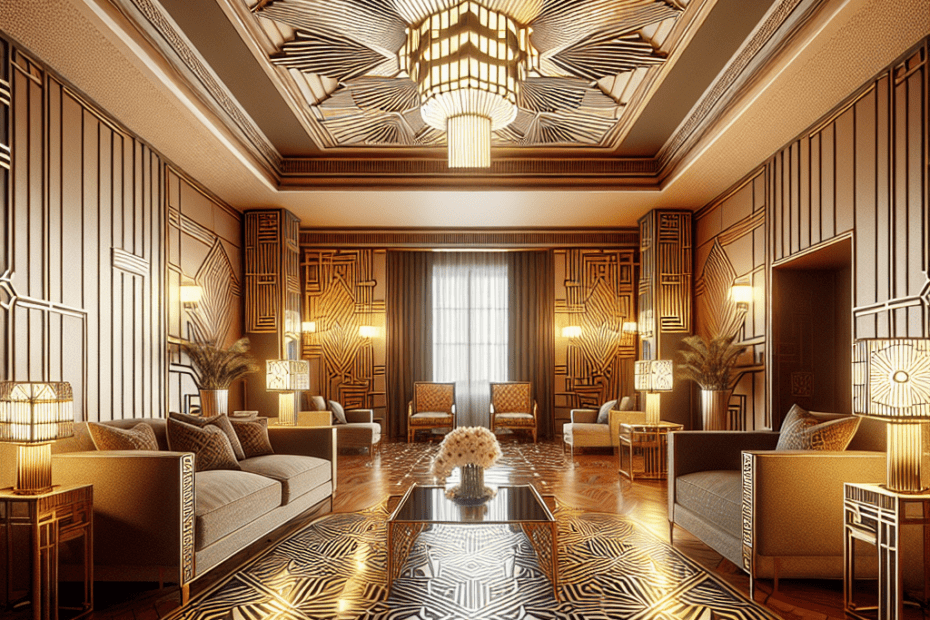“`html
The Role of Geometric Shapes in Art Deco Interiors
In the vibrant world of design, Art Deco stands out as one of the most influential styles of the 20th century. At the heart of Art Deco design is the innovative use of geometric shapes, giving this style its unique charm and elegance. This design movement originated in the 1920s and reached its peak during the 1930s, becoming a precursor of modern design that continues to inspire today.
The Origins of Art Deco and Geometric Influence
They find that the Art Deco movement was born in the aftermath of World War I, a time when society was eager to embrace luxury and modernity. Central to Art Deco is the use of geometric shapes, visible in everything from architecture to interior design. Designers often employed bold lines, symmetrical patterns, and streamlined forms to achieve a sense of order and sophistication.
Key Geometric Features in Art Deco Interiors
- Zigzags and Chevrons: Often seen in flooring and wallpaper patterns, these shapes add dynamic energy and edge.
- Sunbursts and Fan Patterns: Symbolizing the dawn of a new era, these shapes frequently adorn mirrors, lamps, and frames.
- Trapezoids and Rectangles: Used in everything from furniture designs to window panelling, providing stability and balance.
According to a study by the Design Museum, around 35% of Art Deco interiors focus heavily on the use of geometric patterns to achieve that distinct glamorous feel. Source
Materials That Highlight Geometric Designs
Geometric shapes in Art Deco aren’t solely defined by their outlines; the materials used enhance their prominence. Stainless steel, chrome, and exotic woods are often employed to give depth and robustness to the geometric features.
Furthermore, they incorporate glass, marble, and lacquered wood, providing a polished finish that complements the geometric motifs. The reflective qualities of these materials further enhance the aesthetic, giving interiors a light, airy feel.
The Psychological Impact of Geometric Shapes in Interiors
Geometric shapes aren’t just about aesthetics; they also play a role in the psychological atmosphere of a space. Symmetry and repetitive patterns found in Art Deco can create a calming aura, while angular shapes add an element of excitement and modernity. Using geometric elements effectively can influence how a space is perceived and experienced.
| Geometric Shape | Psychological Effect |
|---|---|
| Zigzag Patterns | Energizing and Dynamic |
| Symmetrical Designs | Calm and Orderly |
| Curved Lines | Smooth and Relaxing |
Practical Implementations in Modern Design
Today, designers and homeowners alike embrace geometric shapes in Art Deco for creating stylish and functional spaces. Rooms are often embellished with geometric wall art, rugs, and furnishings. Attention to balance and contrast is crucial, with neutral colors acting as a canvas for the bold, geometric designs.
Moreover, with a resurgence in sustainable design, modern interpretations of Art Deco often incorporate recycled materials while maintaining the defining geometric elegance. This melding of old and new highlights the timeless appeal of Art Deco.
Key Takeaways
- Art Deco is a design style centered on the use of geometric shapes to convey luxury and modernity.
- Common shapes include zigzags, fan patterns, trapezoids, and rectangles.
- Materials like stainless steel and exotic woods are used to accentuate geometric features.
- Geometric shapes not only offer aesthetic value but also impact the psychological ambiance of a space.
- Art Deco remains relevant in modern interiors, often adapted with sustainable practices.
FAQ
- Q: What is Art Deco’s primary influence?
A: Art Deco is primarily influenced by the desire for luxury and modernity, using geometric shapes to reflect this. - Q: Why are geometric shapes important in Art Deco?
A: Geometric shapes create order, symmetry, and a modern look that defines Art Deco design. - Q: How do geometric shapes affect room ambiance?
A: They influence room ambiance by balancing calmness with energy, depending on the shapes involved. - Q: Are Art Deco designs still popular today?
A: Yes, Art Deco remains popular, with many modern designers drawing inspiration from its geometric aesthetic. - Q: What materials best highlight Art Deco geometric designs?
A: Materials like stainless steel, glass, and exotic woods are commonly used to highlight these designs.
“`
